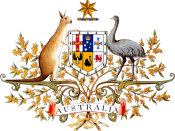Aborigines have played differing roles in Australia over the years, from sole inhabitants, to the subjects of Australia's attempt to create a 'White Australia' However, politically, the extreme opinionated activities which occurred from the 1960s to the 1970s label that era as one of constant change in the lifestyle of the average indigenous person of Australia. In such oppressed times, justice and equality were fought for bravely, and eventually were realized by those who deserved it the most.
Continuing difficulties, and criticisms of the treatment of Aboriginal people especially in central and northern Australia, led in 1936 to demands by the States and by voluntary bodies for increased Commonwealth involvement in Aboriginal affairs. At the 1936 Premiers' Conference in Adelaide, it was agreed that while Commonwealth control might not be practical there should be regular meetings between the State and Commonwealth officers responsible for Aboriginal affairs. At the first such meeting, held in Canberra in 1937, the Commonwealth and the States agreed that the objective should be the absorption at least of 'the natives of Aboriginal origin but not of the full blood'.
In a sense 'assimilation' was that aspect of the policy of protection concerned with the 'future' of Aborigines (mostly of 'mixed blood').in settled areas. In the 1950s 'assimilation' became a widely accepted goal for all Aboriginal people and was adopted as policy by the Commonwealth and by all State Governments. The policy was defined at the 1961 Native Welfare Conference of Federal and State Ministers in these terms:
The policy of assimilation means that all Aborigines and part-Aborigines are expected to attain the same manner of living as other Australians and to live as members of a single Australian community, enjoying the same rights and privileges, accepting the same customs and influenced by the same beliefs as...



NICE :)
There is alot of info in here that is relavent. You have cramed ALOT of info in this and i like it.
Good work
I will give u a :)
*Da_Pyro*
3 out of 3 people found this comment useful.